Planting a tree is a rewarding endeavour that brings numerous benefits to your garden. Trees provide shade, improve air quality, enhance biodiversity, sometimes yield fruit, and add a lasting aesthetic dimension to your garden. Planting a tree in the ground promotes optimal growth, allowing its roots to spread deeply and ensuring better resilience to climatic conditions. Follow this detailed guide to succeed at every step of the planting process.
Why plant a tree?
To recap, a tree is a perennial woody plant, featuring a main trunk that branches into limbs and foliage. Some are tall (over 20 metres high), others adapt to small gardens. There are deciduous, evergreen, marcescent trees, adorned with beautiful flowering, unique habits, or particularly colourful foliage. In short, there’s a tree for every garden.
Planting a tree offers several significant advantages:
- Environmental improvement: trees absorb carbon dioxide and release oxygen, contributing to air purification. Additionally, trees regulate temperature by providing shade, reducing soil evaporation, and cooling the air through leaf transpiration. Finally, tree roots enrich the soil, reduce erosion, and regulate excess water. In short: let’s plant trees!
- Garden aesthetics: a well-chosen tree adds natural structure and beauty to your garden.
- Wildlife habitat: trees also provide refuge and a food source for garden wildlife, including birds and insects.
- Fruit production: fruit trees and some ornamental trees yield edible fruit.
Oli’s tip: when choosing a tree at the nursery, opt for a specimen with a straight trunk, free from wounds or cracks, and with intact bark. Ensure the roots are well-developed, neither too coiled in the pot nor damaged, and check for the absence of diseases or parasites by inspecting the foliage and young shoots.
Discover our selection of books on trees in our online shop.
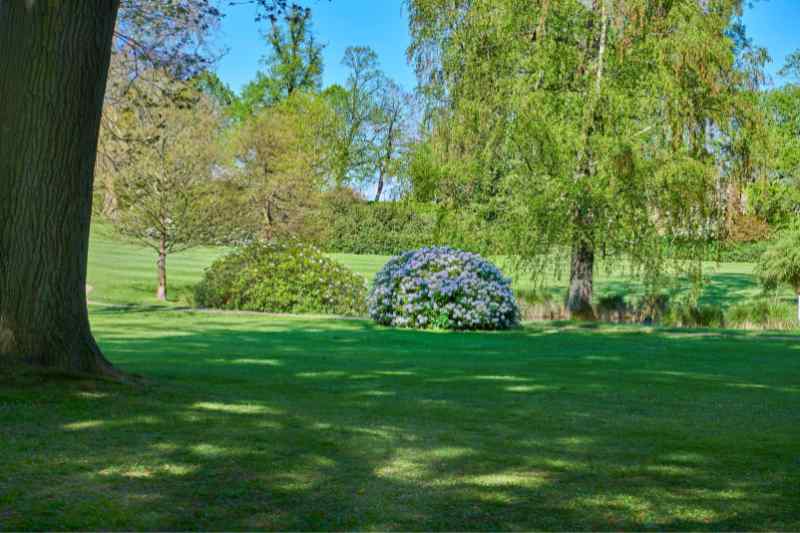
When to plant a tree in the garden?
The ideal time to plant a tree depends on its presentation:
- Bare-root trees: plant them in autumn, after leaf fall, or in early spring, before bud burst and outside frost periods.
- Container-grown or root-balled trees: they can theoretically be planted year-round, but prefer autumn or spring to avoid stress from extreme temperatures and drought.
Avoid planting when the soil is frozen, waterlogged, or during intense drought.
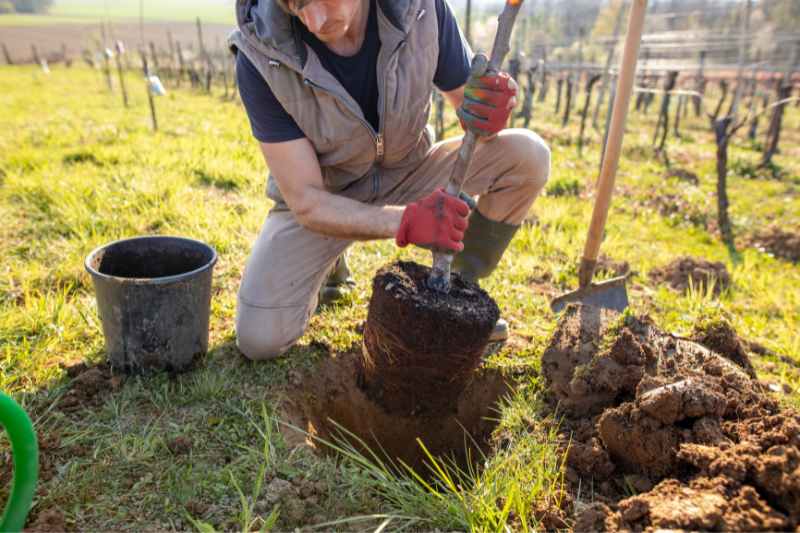
Where to plant a tree?
The choice of location is crucial for the tree’s development:
- Exposure: most trees prefer a sunny spot, but some species tolerate partial shade. You’ll find this information in literature, on specialised websites, or on the label when purchasing.
- Soil type: ensure the soil is well-drained. If your soil is heavy or clayey, consider improving drainage by adding compost. However, some trees thrive in heavy soil, like most willows, alders, or hawthorns. There are tree species for every situation.
- Available space: account for the tree’s mature size to avoid conflicts with surrounding structures or other plants. To learn more, read "Planting Trees and Shrubs: What Does the Law Say?"
A quick word from Oli: the choice of tree should suit your climate and garden soil. For example, the holm oak tolerates heat and drought well, while the maritime pine and the tamarisk withstand strong winds. For chalky soils, opt for species like the Montpellier maple or the honey locust, which thrive in such conditions.
What about pots? Some trees are small enough or grow so slowly that they can be cultivated in pots, at least for a few years. Planting a tree in a pot requires a sufficiently large container with drainage holes to prevent waterlogging and a substrate suited to the species. Regular watering and fertiliser are essential to compensate for limited space and ensure balanced growth.
Essential tools for planting a tree in the ground
Prepare the following tools and materials:
- A spade or digging fork: to dig the planting hole.
- A pruning shear: to trim damaged roots or dead branches.
- A watering can
- Compost or organic amendment: to enrich the soil if needed.
- A stake and soft ties: to support the tree in windy locations.
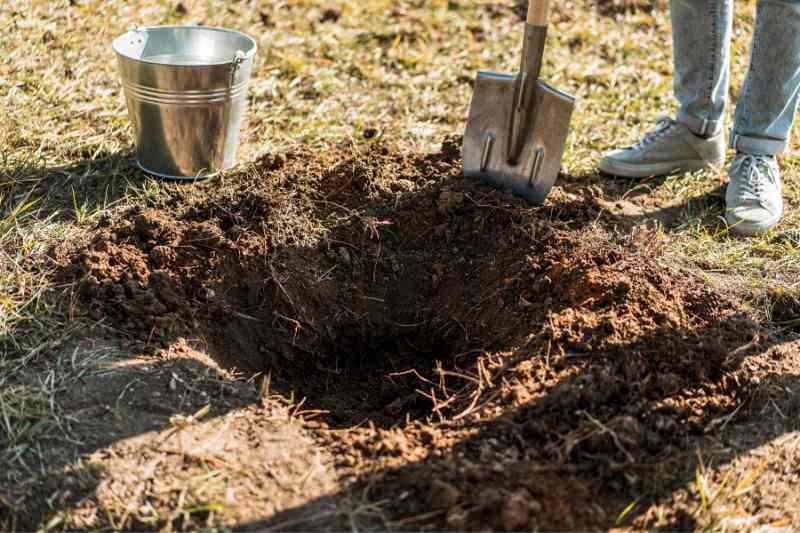
Practical steps for planting a tree in the garden
- Soil preparation: loosen the soil over an area about two to three times the diameter of the tree’s root ball. Incorporate compost to improve soil structure.
- Digging the planting hole: dig a hole as deep as the root ball and two to three times wider. This allows roots to spread easily.
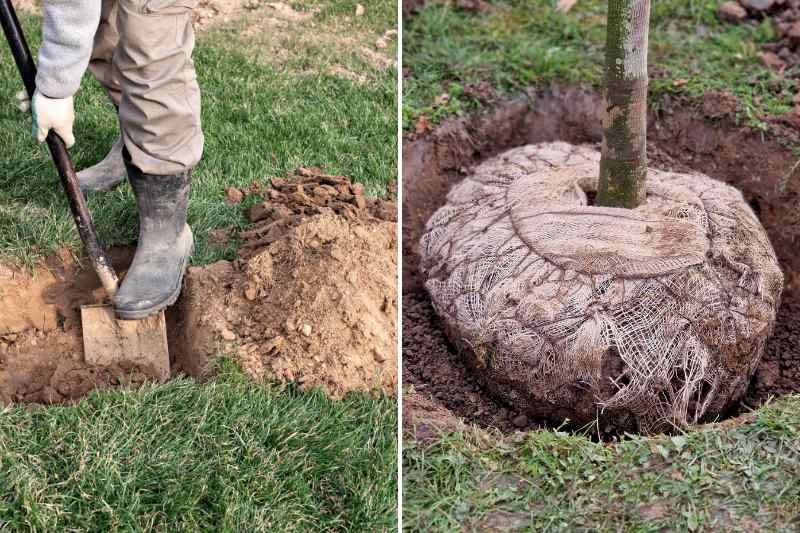
- Plant preparation:
- Container-grown trees: soak the pot in water for a few minutes to moisten the root ball. Gently remove the container and untangle coiled roots, especially if they’ve formed a root ball.
- Bare-root trees: trim damaged roots and puddle them by dipping them in a mix of soil, compost (or manure), and water to encourage establishment.
- Plant placement: position the tree in the hole, ensuring the collar (transition zone between roots and trunk) is slightly above ground level.

- Filling the hole: backfill with the excavated soil, lightly firming to eliminate air pockets.

- Watering: water thoroughly to ensure good contact between roots and soil.
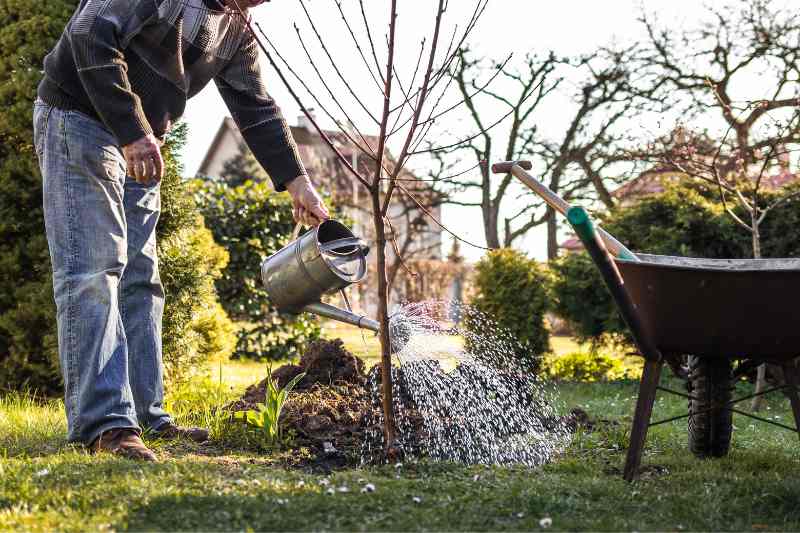
- Staking: if needed, place a stake on the side of prevailing winds and secure the tree with soft ties to avoid bark damage.































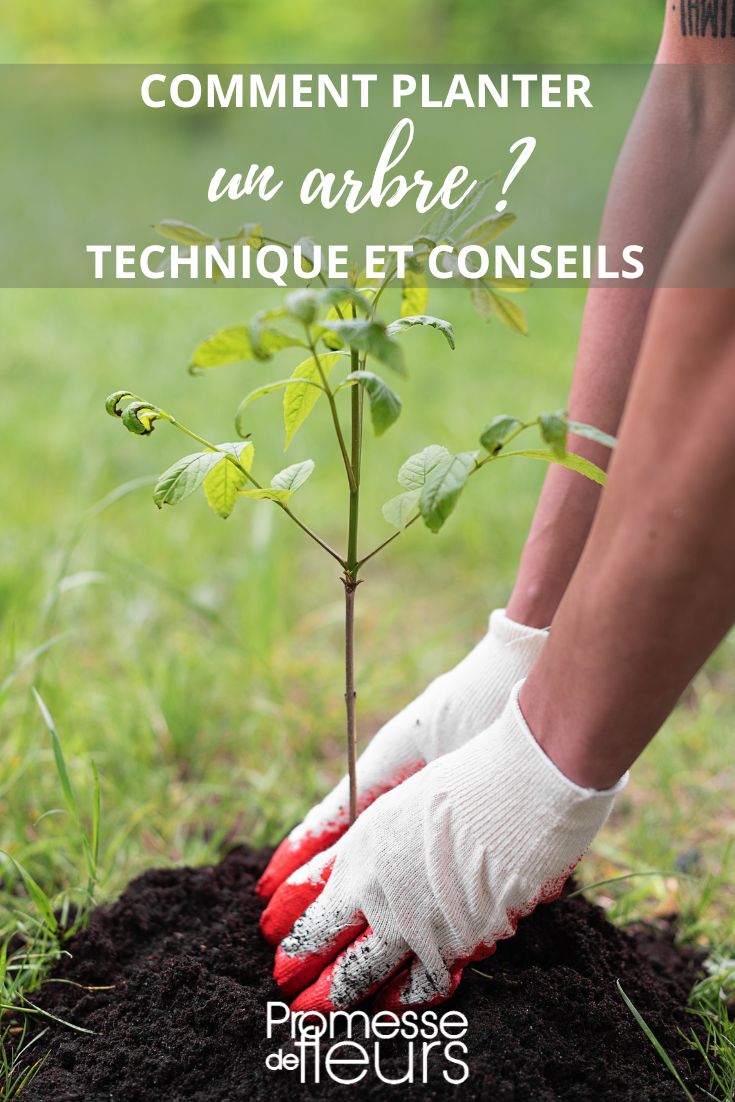
Comments